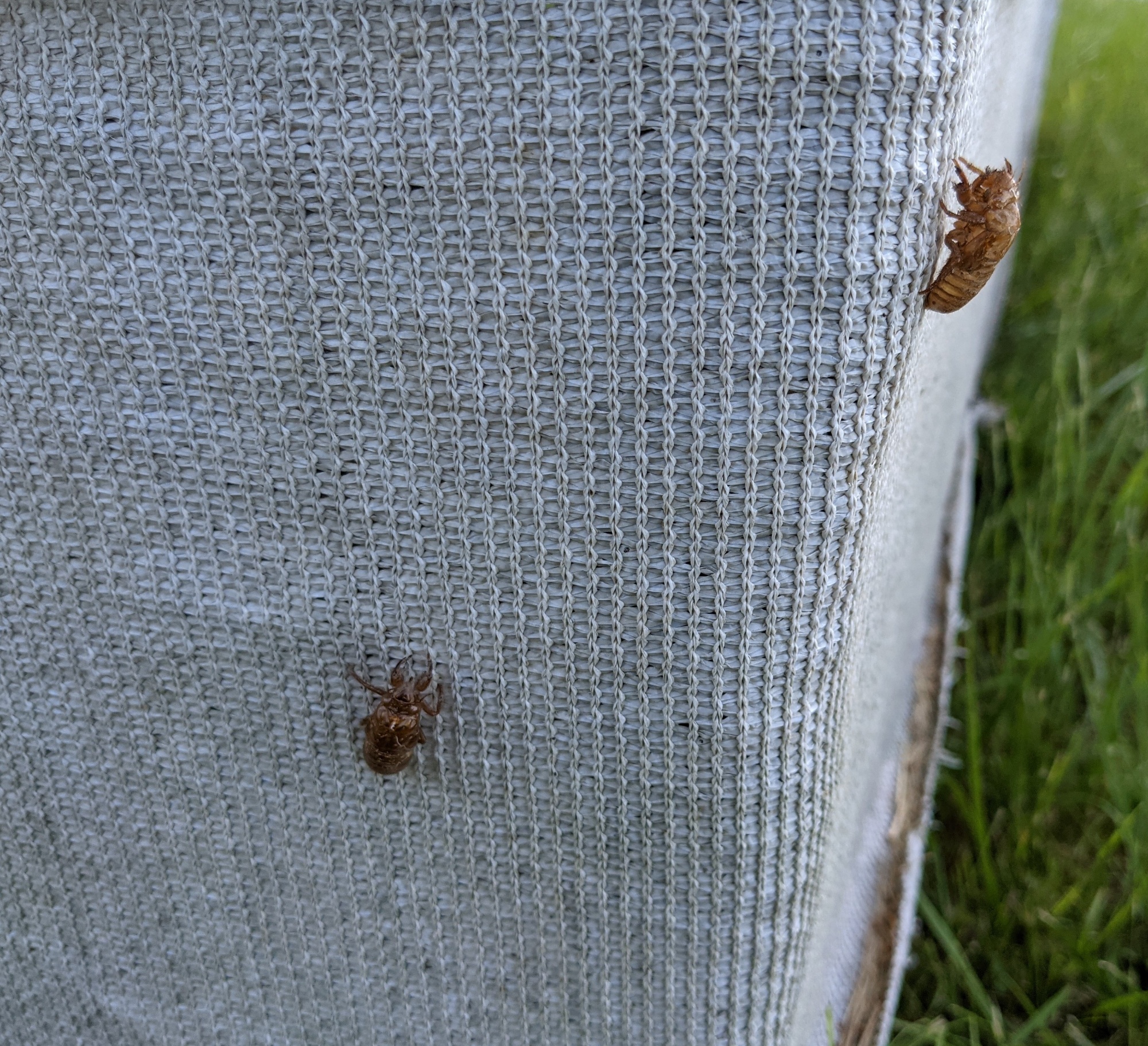
As we were moving tractors this morning, I noticed some unusual tan objects clinging to the shadecloth. Upon closer inspection, I saw that they were the molted skins of cicadas – Brood X had arrived!
Even better, the adults, newly-molted, were drying off under the lids of the tractors and much more cooperative in posing for photos than I normally find cicadas to be. Thanks!
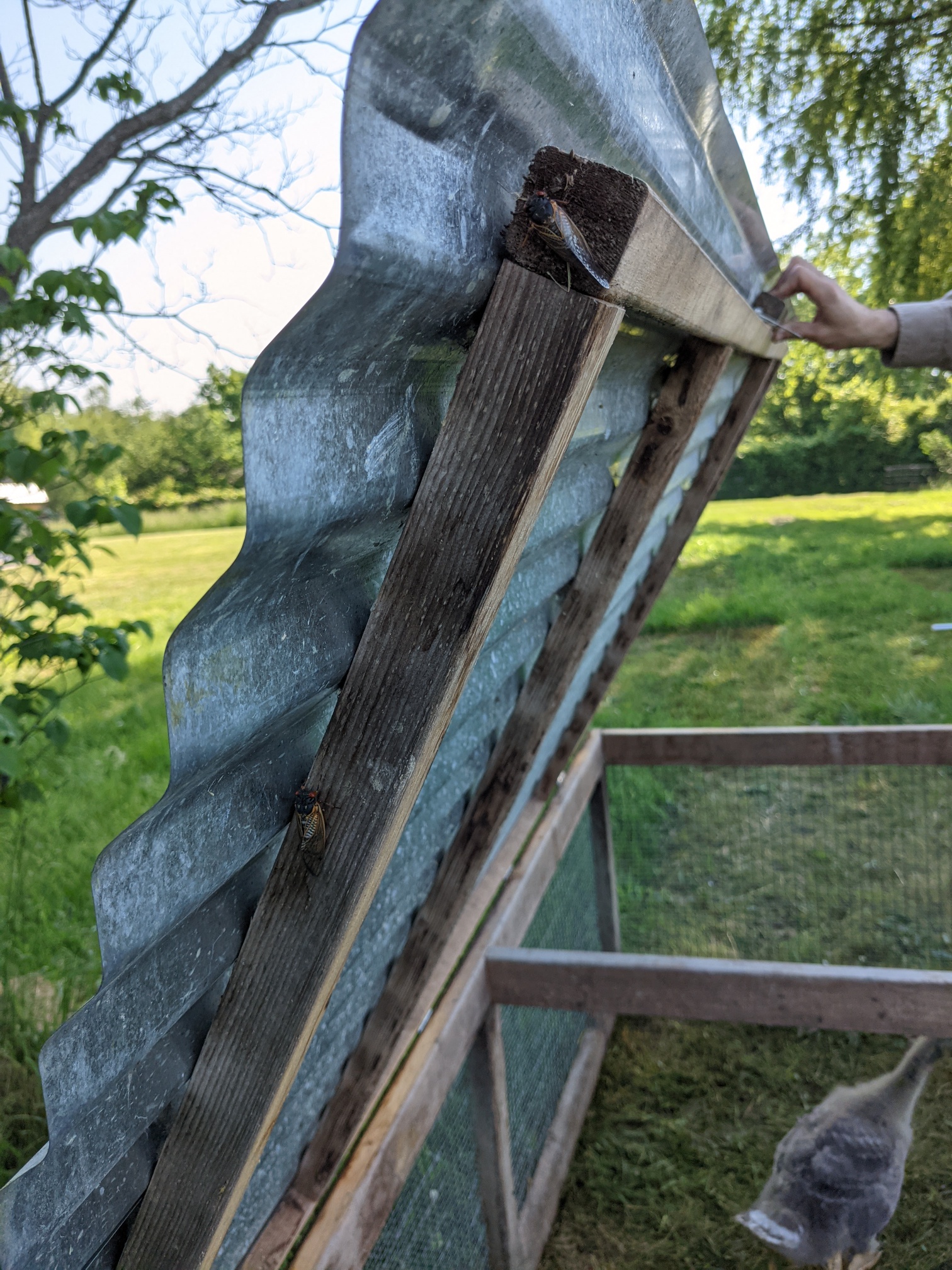
Do you see the two on the left (wooden) edge of the lid? 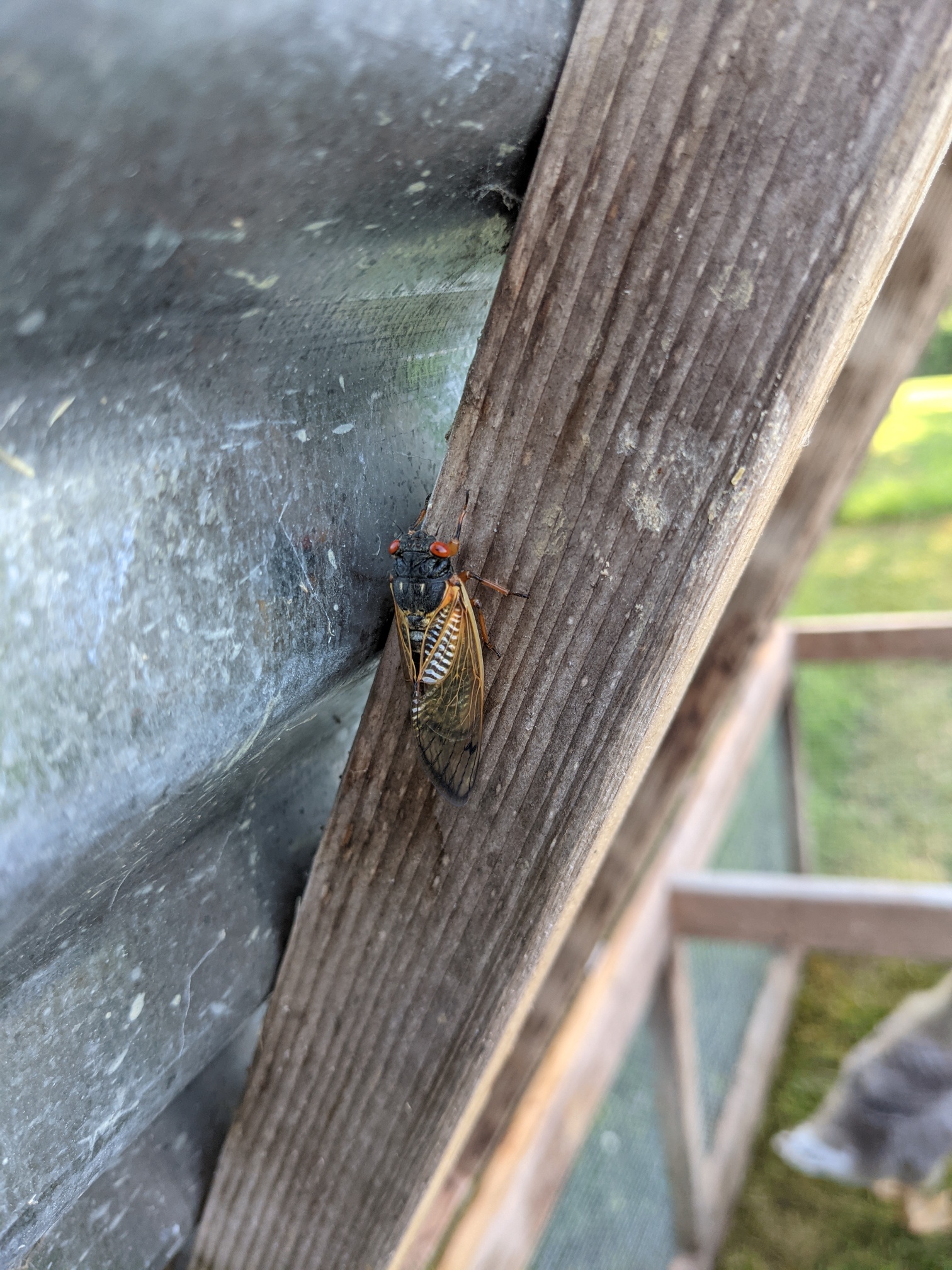
Close-up on the lower one 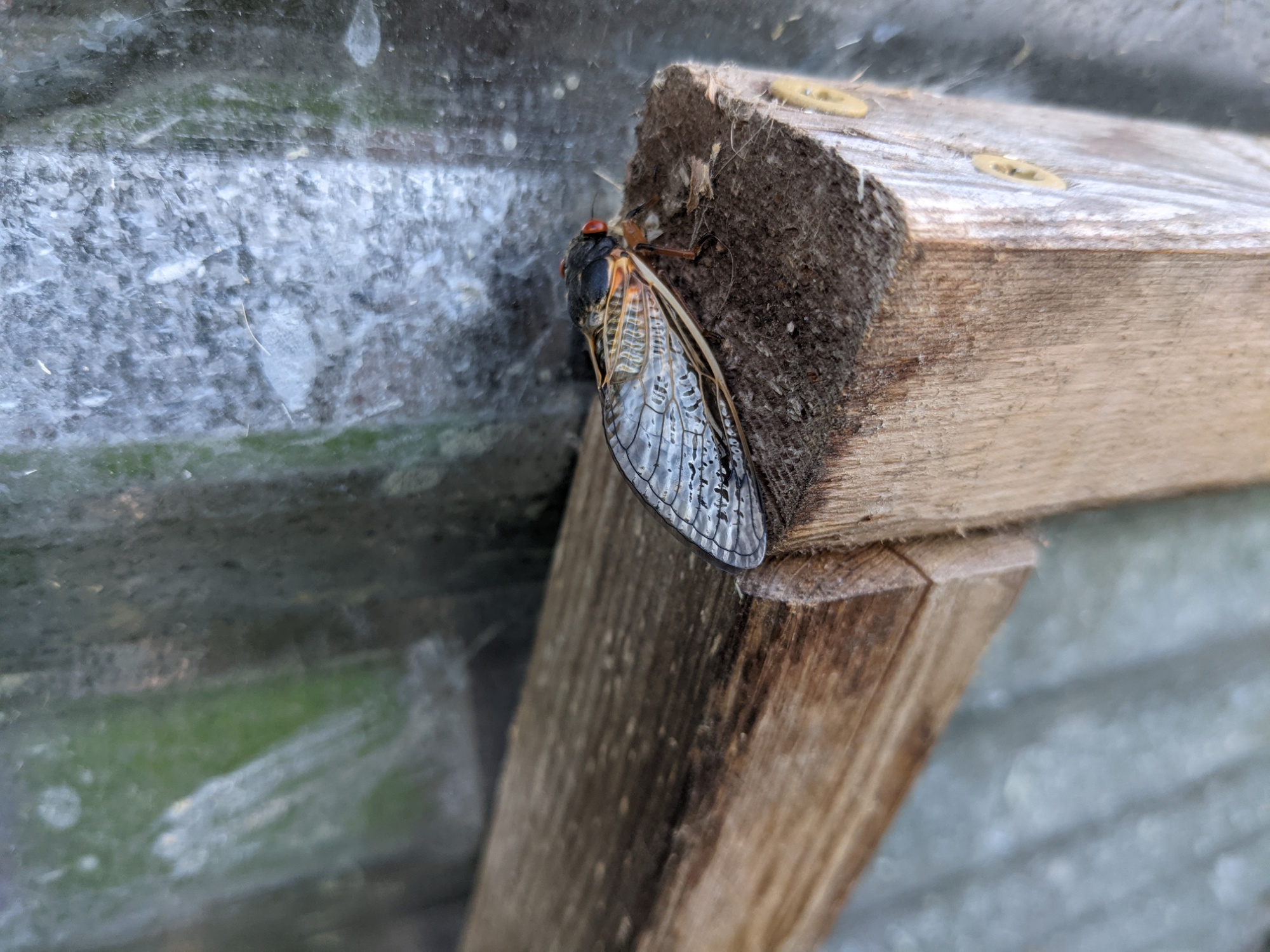
The other one, higher up 
Clinging to the outside
You may already know that periodical cicadas only emerge after a certain period of time underground. Brood X is a 17-year cicada…so, accordingly, it’s been 17 years since they last saw sunlight, burrowing underground as nymphs in 2004. 2004! Where were you then?
While some people may not like the otherworldly appearance – or the almost metallic sounds – of the cicada, I find them fascinating and rather beautiful. The first time I saw an actual cicada was when I was visiting Kentucky, way back in 2007. I had no idea what the “buzzing” sound was that seemed to emanate from the trees, thinking it was something electrical, like a power line. LOL – of course, I know better now!
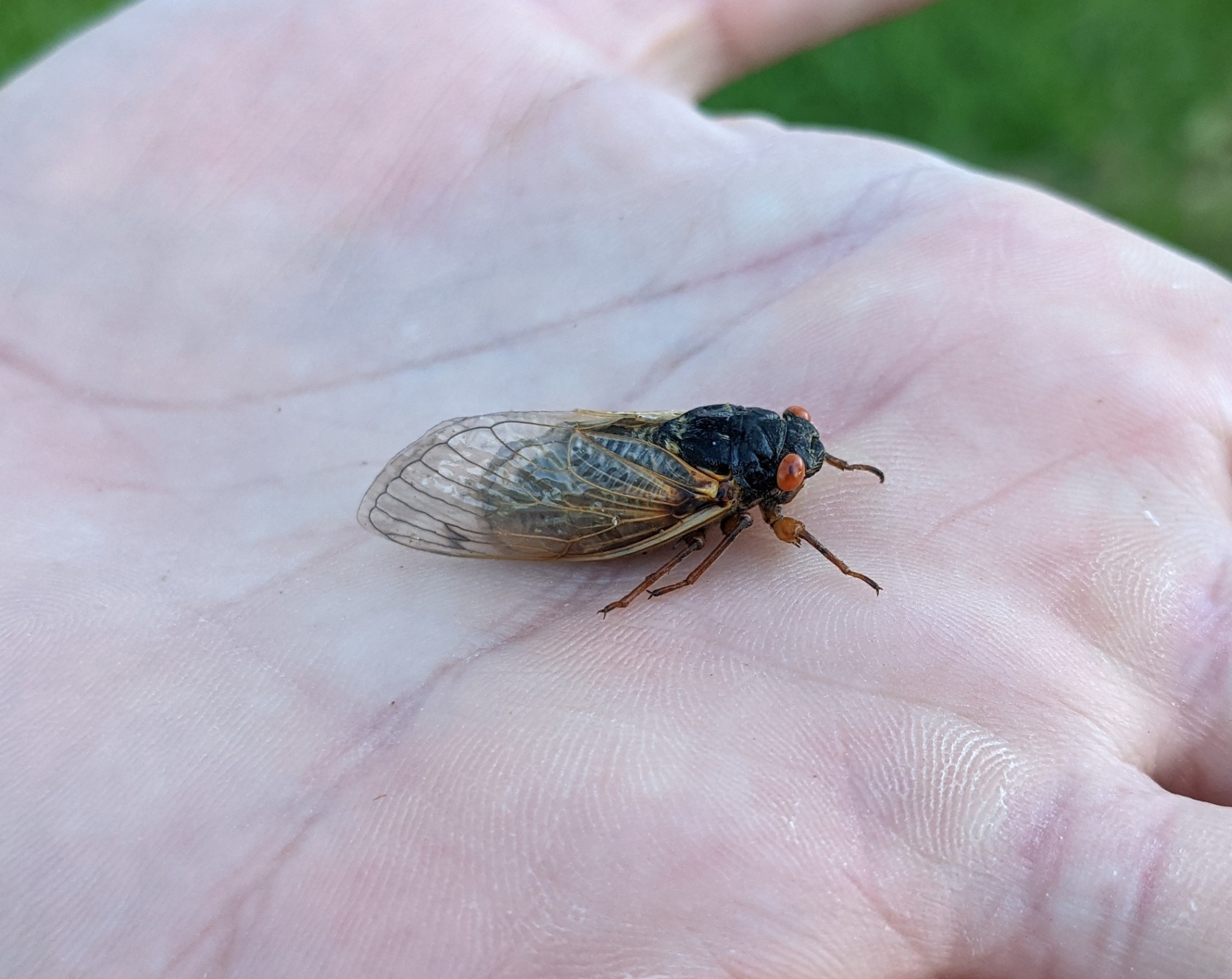
Many animals benefit from the emergence of the cicadas, which appear en masse: birds, snakes, and other wildlife will enjoy a feast of the insects. A hapless adult cicada, having molted on a gosling tractor, flew inside when we opened it and was quickly snapped up by a hungry gosling. You thought they were herbivores? Think again – I’ve seen them eat various types of bugs, including worms, when the opportunity presented itself.
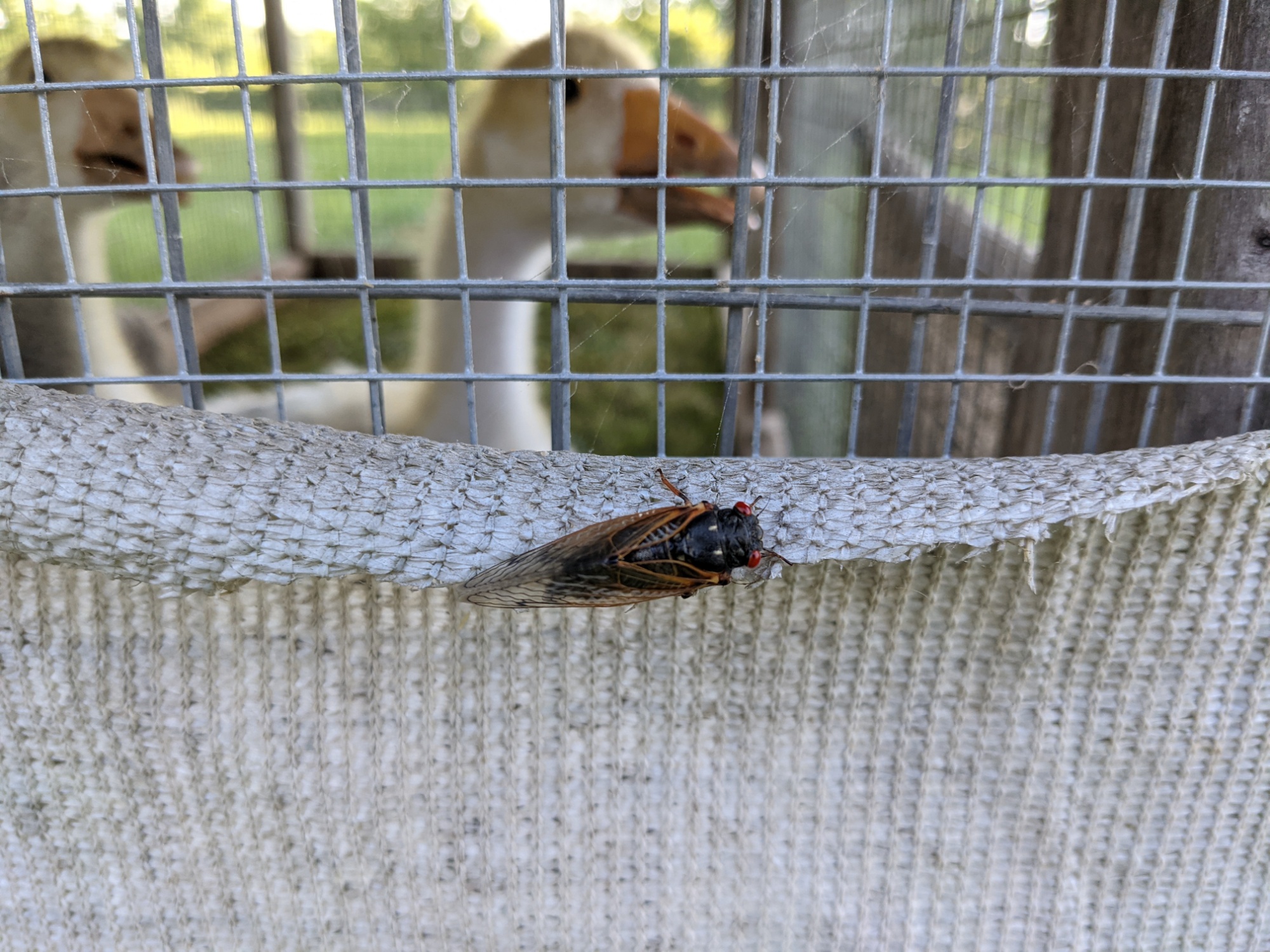
It’s still quiet outside, but at the hottest part of the day and into the evening, the cicadas will begin making their music. If there are enough of them, it will be loud. And then, when their life cycle concludes in a few weeks, it will grow quiet again – until the next group of cicadas emerges.

Learn more about Brood X periodical cicadas here.
